标签:http blog join iss sts size cut 执行 土豆
视频链接
土豆:
B站:
本章目录:
1. Bash shell
1.1 什么是 shell ? (我们通过shell与Kernel核心沟通,使Kernel操控硬件)
1.2 系统的 shell 与 /etc/shells 功能 (cat /etc/shells一下,可以看到当前电脑的shell)
1.3 Bash shell 的功能 (1.命令编修能力,就是记忆你写的命令按上下键切换。2.命令与档案补全功能,就是tab键补全。3.命令别名(alias)设定功能alias命令。下面还有一些介绍)
1.4 Bash shell 的内建命令: type (用type命令可以看你的命令是bash内部的还是外部的,亦或者是重命名的)
1.5 指令的下达
2. Shell 的变量功能
2.1 变量的取用与设定: echo, 变量设定规则, unset
2.2 变数的用途?
2.3 环境变量的功能: env, 一些重要的环境变量, set, export
2.4 语系档案的变量 (locale)
2.5 变量的有效范围:
2.6 变量键盘读取、数组与宣告: read, declare, array
2.7 与档案系统及程序的限制关系: ulimit
2.8 其它额外变量功能
3. 命令别名与历史命令:
3.1 命令别名设定: alias, unalias
3.2 历史命令: history, HISTSIZE
4. Bash shell 使用环境:
4.1 绝对路径与相对路径
4.2 登录讯息显示数据: /etc/issue, /etc/motd
4.3 环境设定档: bashrc, ~/.bashrc, ~/.profile, profile...,/etc/inputrc, source
4.4 终端机的环境设定: stty, set
4.5 万用字符与特殊符号:
5. 数据流重导向 (redirecte)
5.1 何谓数据流重导向?
5.2 命令执行的判断依据: ; , &&, ||
6. 管线命令 (pipe):
6.1 撷取命令: cut, grep
6.2 排序命令: sort, wc, uniq
6.3 双向重导向: tee
6.4 字符转换命令: tr, col, join, paste, expand
6.5 分割命令: split
6.6 参数代换: xargs
6.7 关于减号 - 的用途
shell
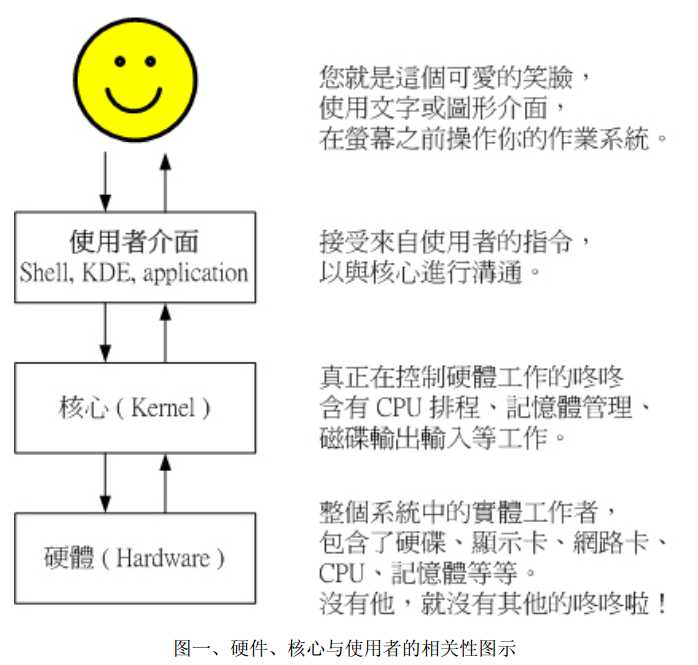
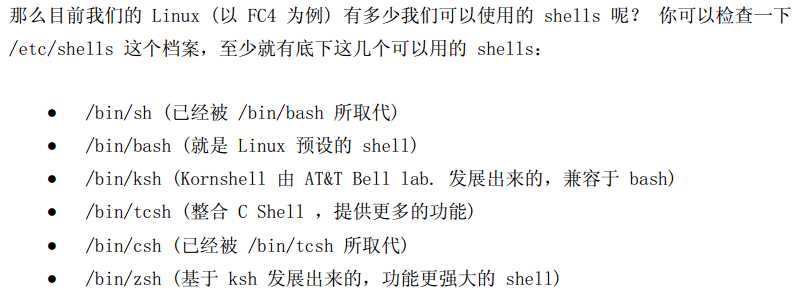
Bash的优点
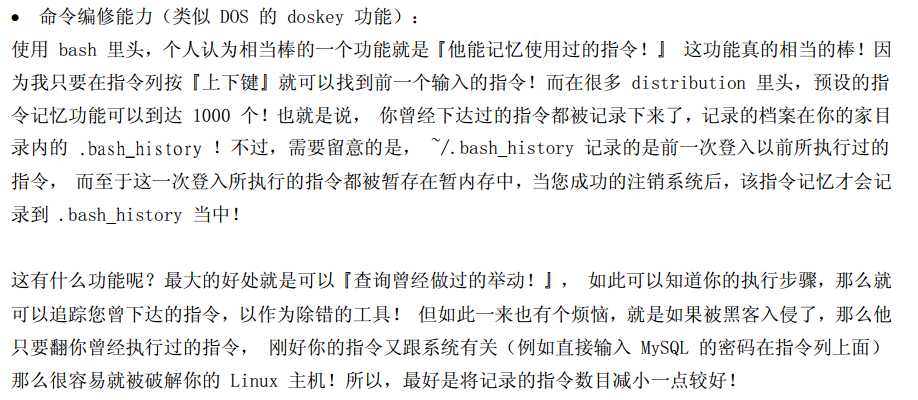


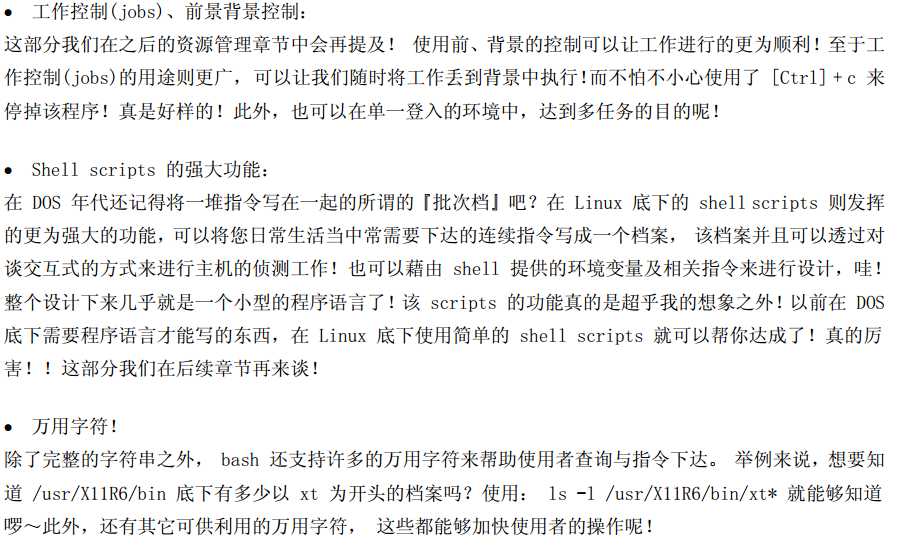
type
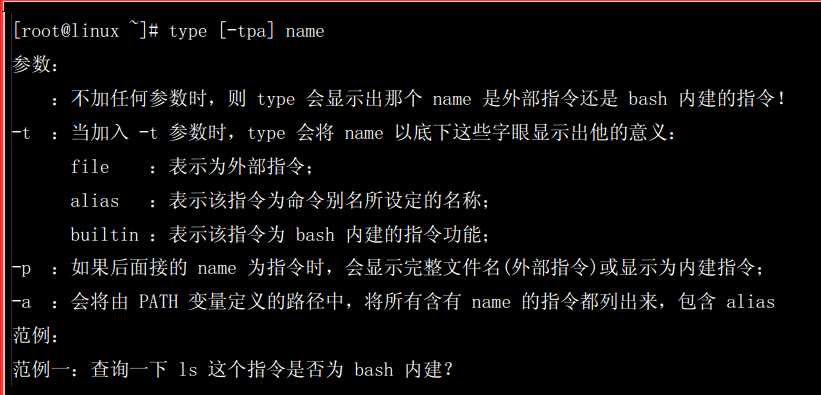
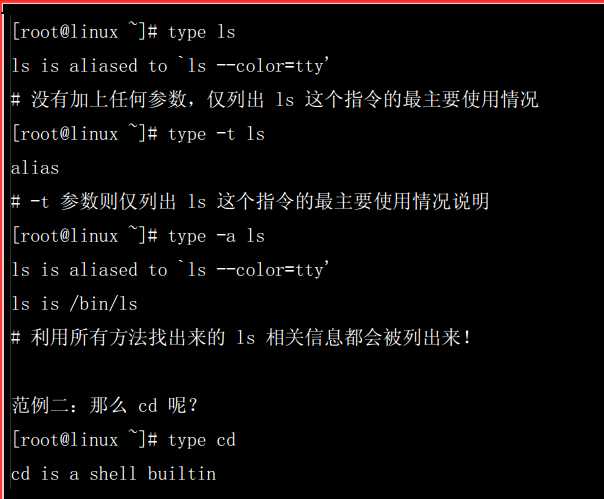

标签:http blog join iss sts size cut 执行 土豆
原文地址:http://www.cnblogs.com/yunquan/p/6725354.html